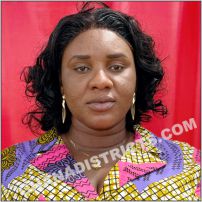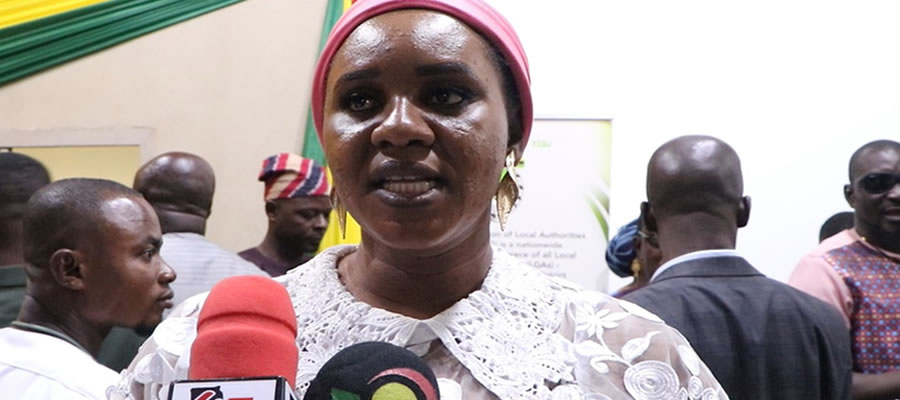

Physical and Natural Environment
The Municipal is endowed with abundant natural resources which offer opportunities for development if well managed. These unique features include the location, size, climate and vegetation among others.
Area and Location
The Municipal has a total land area of about 798 square kilometers (km2). It is located between latitudes 7o 35’ N and 7o 58’N and longitudes 2o 47’ W and 2o 78’W. It was established by the LI 1777 in 2004, following the split of the then Jaman District into Jaman North and South Districts. As indicated in figure 1.1, the Municipal shares borders with the Jaman North District in the North, Berekum West District in the South-East, Dormaa Central Municipal in the South -West and La Cote D’Ivoire in the West. The vast land mass of the Municipal couple with its strategic location offer economic opportunities in the area large scale agriculture and a reliable market opportunity for farm produce.
Relief and Drainage
The relief of the Municipal is undulating: rises between 150 and 600 meters above sea level. The highest hills are located along Drobo and Bodaa, in the Southern and North eastern parts of the Municipal. These areas serve as sources of many rivers in the Municipal.
On the other hand, the drainage pattern of the Jaman is largely dendritic which flows in a north-east and southern directions. Most of the rivers flow from the northern end of the Municipal with a few of them including Atuna, Fetenta and Ntabene having their sources from southern Berekum and Dormaa Municipalities. The dendritic drainage and the relief system would serve as very good watershed which can be developed into irrigational facilities for the agricultural production in the Municipality. Some of the rivers could as well be developed into Small Town Water facilities for domestic use.
Vegetation and Climate
The Municipal lies within the wet semi-equatorial region, with a mean annual rainfall ranging between 1,200 -1,780mm with double rainfall regime pattern. Its major rainy season occurs between April and June whiles the minor rains set in from September to October. The month of August experiences a short dry season, with a prolonged dry period occurring between Decembers and March. The average annual temperature is about 25°C. Relative humidity is also generally high between 70% and 80% during the rainy season.
There are two major types of vegetation in the Municipality. These are the semi-deciduous forest and savanna woodland. Parts of the original semi-deciduous forest have become secondary type of vegetation as a result of extensive lumbering and agricultural activities. This secondary type of forest is made up of shrubs and grasses with few original tree species such Odum, Wawa and Mahogany. The savanna woodland is located at the northern part of the district where it shares boundaries with the Jaman North District and parts of La Cote D’Ivoire. It is characterized by elephant grass, shrubs and a few scattered trees ranging between 14m to 27m high.
The favorable climate coupled with the rich vegetation if well managed would enhance agricultural production in order to improve food security of the Municipality. However, the emerging rapid change in the vegetation cover in the area is a potential threat to the vegetation and natural species.
Soils, Geology and Minerals
There are three main categories of rocks and two soil types which underlie the Municipality namely; Birimian, Buem and Dahomeyan rocks. Considering these rock types, the Birimian rocks are the mineral bearing rocks. Minerals found in the Municipality include: Gold at Yaamiasa, Atuna and Adamsu and Clay deposits also reported commercially at Dwenem. The Birimian rocks hold the potential for prospecting several minerals including gold, diamond and other precious stones.
The Municipal Assembly, in collaboration with the Traditional Authority has not given out any concessions. Despite these mineral deposits in the district, mining activities are yet to be undertaken due to strong resistance from the local community people.
The Municipal is largely characterized by soils developed from the Birimian and Buem series. The geological features together with vegetation influence give rise to two distinct soils. These are the forest Ochrosols and the savanna ochrosols. Substantial clay deposits which could be developed into ceramics are located in the Municipality.
The combination of these underlying rocks has resulted in the formation of different soil types which support different agricultural production. The soils types support the production of Cashew, Cocoa, citrus, oil palm and food crops (maize, vegetables, sugar cane, rice and legumes).
Impact of Physical Human Activities on the Environment
The livelihood of human beings is much depended on his physical surroundings or environment. Therefore, over the years the people of the Municipality and the Central Administration undertook some socio-economic activities aimed at improving the welfare of mankind. Such activities include the construction of physical infrastructure such as schools, hospitals, roads, bridges, water and sanitation facilities, houses etc. Although these interventions help mitigate major human sufferings, they sometimes impact negatively on the environment which supports our existence on this earth.
Moreover, the 2010 Population and Housing Census recorded a population growth rate of the district as 2.4 % rates slightly lower than the regional and national figure of 2.5 and 2.7% respectively. Despite the seemingly reduction in the population growth rate, the people derive mainly their livelihoods from the environment thus the land for farming, animal husbandry and the settlements. Comparing the d Municipality’s population and its daily socioeconomic requirement much pressure is exerted on the scarce natural resources on meeting the growing demands.
Population and development are inextricably related as changes in one extreme invariably affect the other. Every action of humanity has some environmental impact (either negative or positive). Pollution is a result of human activities on the environment. The main pollution is on the land, water and air.
To explore the impacts of increasing human numbers on nature, many changes have been observed in the district regarding the relationships between human population density (HPD) and biodiversity. The implicit assumption in many of these observations is that as population density increases so does the threat to biodiversity. The implications of this assumption are compounded in our understanding that, species richness for many taxonomic groups is often highest in areas with high human population density. If increasing human population density is a threat to conservation, this threat may be magnified owing to the spatial congruence between people and species richness. In light of this, recognition must be given to the relationships between human population density and measures of biodiversity status focusing in particular on evidence for the spatial congruence between people and species richness and the threat that increasing human population density may pose to biodiversity conservation.
Our understanding of the relationships between human population density and biodiversity is skewed by geographic and taxonomic biases. The most convincing indication of the negative impact of increasing human population density was a significant negative population correlation between density and the size of protected areas. The magnitude and implications of spatial congruence between people and biodiversity should be explored using the principles of complementarily and irreplaceability. Human development as a threat to conservation should be assessed within a complex, interdisciplinary framework, although population size is still considered a key factor. Future population growth and expansion of human settlements in the Municipality will present increasing challenges for conserving speciesrich regions and maximizing the benefits humans gain from nature.
Human activities have a major impact on the biodiversity, while biodiversity change is considered as an important global change in its own right. Experiences in the district have shown that, the effect of human activities on soil environment and plant diversity showed that the main soil environmental factors and plant species diversity had some obvious changes, of which, the changes of man-made pine woods and heavy grazing disturbance were the largest. It is suggested that natural laws and consistency of ecosystem processes in the low and long temporal scale should be considered adequately in the management of the environment.
Industrialization and Modernization have brought about a drastic change in the quality of the environment. Industrial pollution has caused air, water and land pollution. The emissions from vehicles and industries have caused deterioration in the quality of air. The waste water generated from domestic and effluents released from industries are being sent directly to the rivers thereby deteriorating the water quality. Lack of waste management practices has also had a negative effect on the quality of the environment. Human activities like burning of electronic wastes (e-wastes) and plastics have caused release of carcinogenic substances. Dumping of wastes in landfills has also caused slow seepage of wastes into the ground thereby polluting the land and also polluting water in the nearby vicinity.
This way, the effect of human activities has been unexplainably and extraordinarily huge. Human activities, industrialization, modernization and rapid advancement in technology have had pernicious effects on the quality of the environment. There has been degradation of the quality of air, water and land. The need for economic growth by the nation and for that matter the Municipal has put everybody in a race which in turn has negative effect on the quality of the environment. Individuals and organization are exploiting the natural resources present for a better living, but the repercussions are felt on the quality of the environment in threefold.
Climate Change, Green Economy and Environment in general
According to UNEP, Green Economy is system of development that results in improved wellbeing and social equity, while significantly reducing environmental risks and ecological scarcities.” In recent times, it is considered as a vehicle to deliver sustainable development rather than serve as a destination itself. This means that the vehicle must be driven and balanced by sustainable development indicators.
However, with the current growth paradigm within society, there exist serious doubts about the current growth models to be sustainable and to meet Municipal targets. As a result of emerging socio-economic and climate threats in the following patterns are being observed and experienced;
- Unsustainable patterns of production and consumption within and across communities;
- The pattern of growth has not contributed to effective job creation for the population;
- The poor also have less access to resources such as clean and affordable energy, water, productive land;
- The poor are disproportionately impacted by unsustainable development;
- Growing concerns about climate change and degradation of ecosystems and biodiversity
Therefore, mainstreaming Green Economy is an opportunity for achieving Sustainable Development in the area. Unfortunately, there is a knowledge gap in the adoption of the concept at the Municipal level. Hence the need for the local key stakeholders to put in place adequate information and approaches on how district assemblies can mainstream green economy issues into the new medium–term Development Plans
Date Created : 6/9/2023 12:00:00 AM












 facebook
facebook
 twitter
twitter
 Youtube
Youtube
 +233 593 831 280
+233 593 831 280 0800 430 430
0800 430 430 GPS: GE-231-4383
GPS: GE-231-4383 info@ghanadistricts.com
info@ghanadistricts.com Box GP1044, Accra, Ghana
Box GP1044, Accra, Ghana